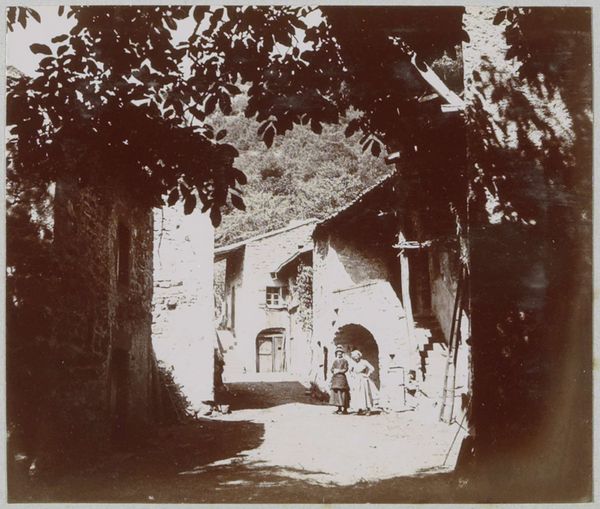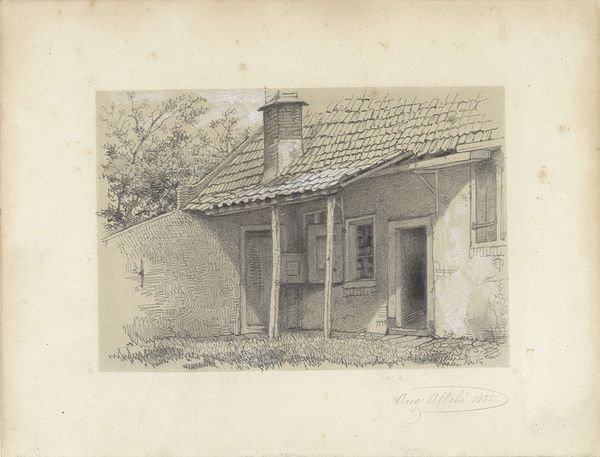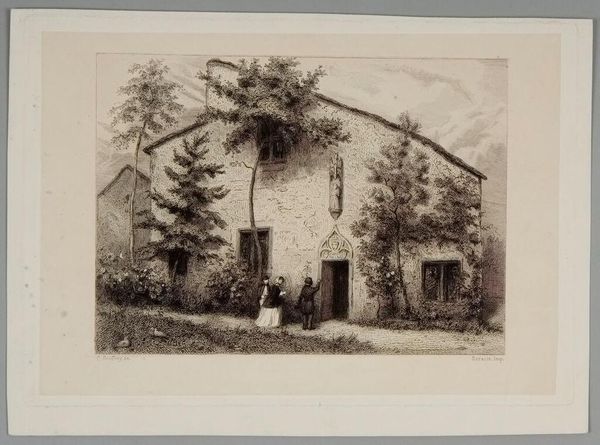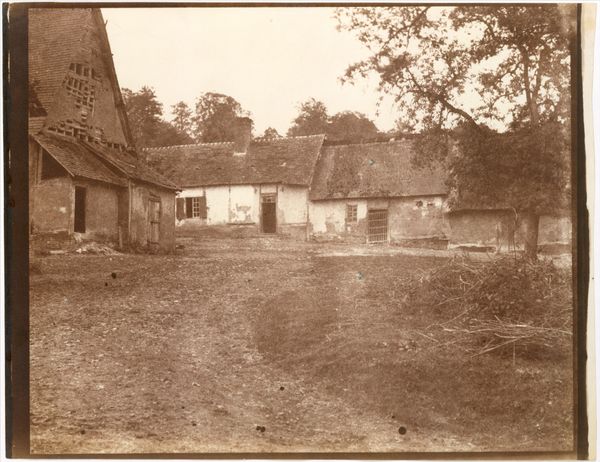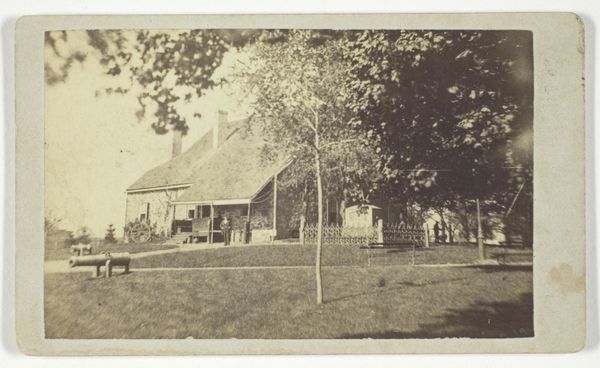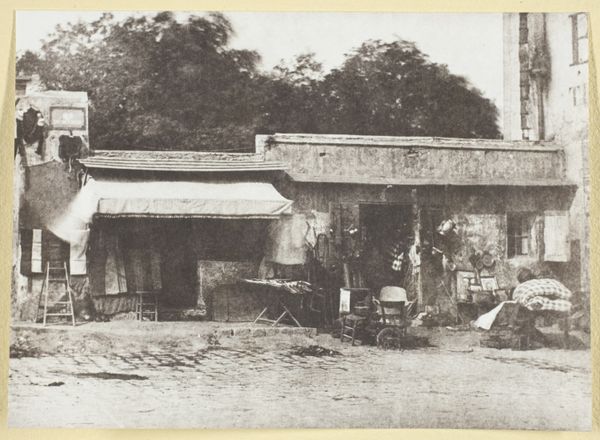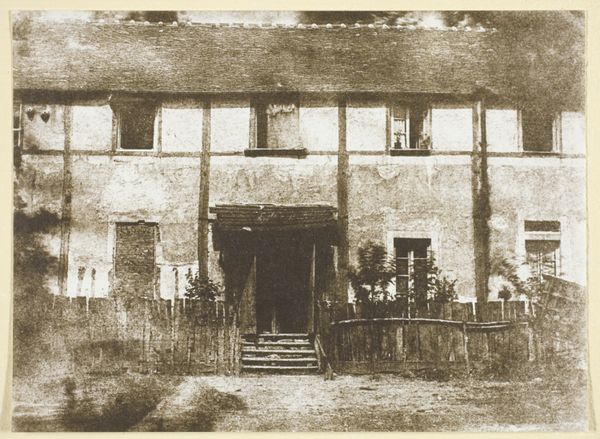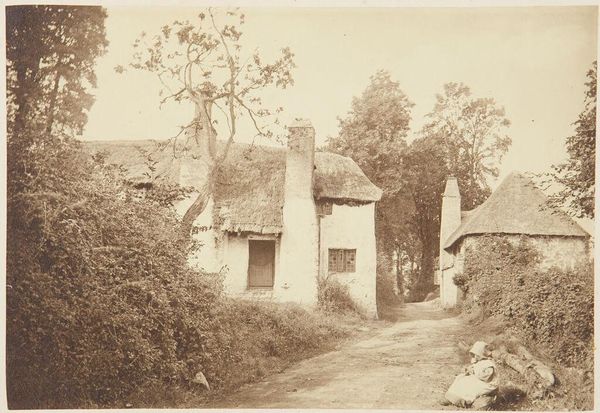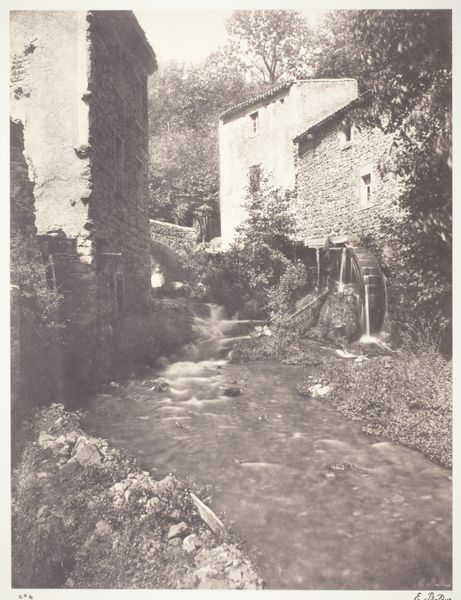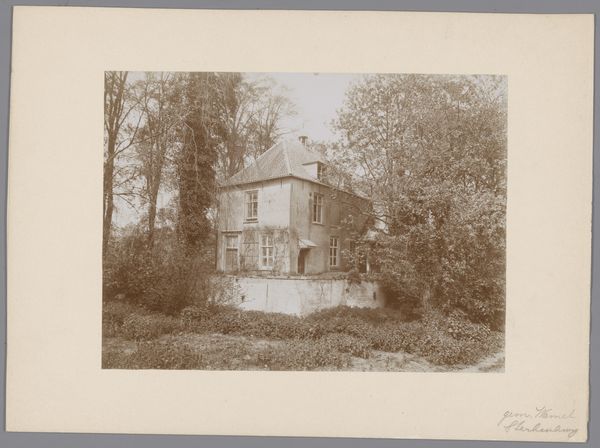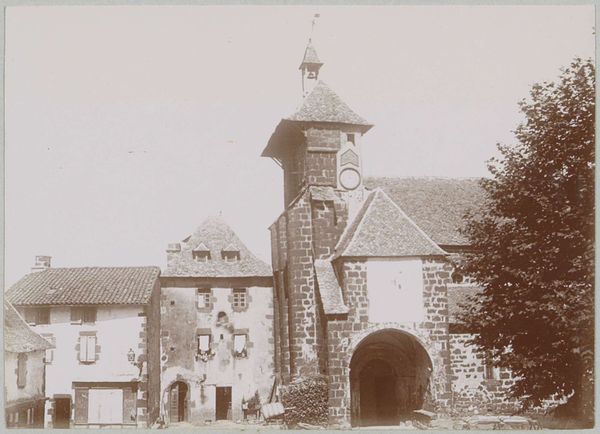
daguerreotype, paper, photography
#
16_19th-century
#
french
#
old engraving style
#
landscape
#
daguerreotype
#
paper
#
photography
#
19th century
Dimensions: 17.2 × 22.8 cm (image/paper/mount)
Copyright: Public Domain
Curator: Here we have Hippolyte Bayard's "Le Moulin: Paul Restauranteur," likely dating between 1842 and 1865. Bayard, a pioneer of photography in France, captured this image using the daguerreotype process, printed on paper. Editor: The photograph gives a slightly surreal first impression. The tonality, the subject itself... it feels suspended between a documentation of labour and a ghostly still life. Curator: I think the textures really contribute to that feeling, don't you? The rough stone of the mill contrasts so strongly with the smooth surfaces that we now associate with photographs. It immediately suggests something of the heavy manual labour that defined life for so many at the time. The materiality here evokes a sense of history. Editor: Absolutely. Notice how the round shape, possibly a millstone, is placed so centrally, echoing the circular narratives of food production. It almost feels like a monument. Also, there is this subtle tension created between nature reclaiming spaces—the vines climbing onto the structure—and architecture symbolizing an intervention of people over time, using natural elements as materials to live and subsist from. Curator: Considering that Bayard was competing with Daguerre at the time, this image becomes even more fascinating. The daguerreotype process itself was complex, time-consuming, very reliant on materials such as silver-plated copper sheets. Editor: It prompts the questions: What are we consuming, how do we relate to landscapes, and how the production has an enduring place and meaning in society? This picture seems to invite you to slow down, reflect upon layers of history embedded within everyday life. Curator: Precisely. It's a quiet meditation on labor, place, and memory. I see this work speaking to our present anxieties around craft and industry. Editor: And about our enduring relationship to home, sustenance, and the narratives they evoke through images. Curator: A wonderfully rich image; Bayard encourages us to look back, contemplate our present and, perhaps, shape our collective future.
Comments
No comments
Be the first to comment and join the conversation on the ultimate creative platform.
